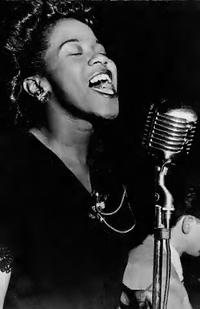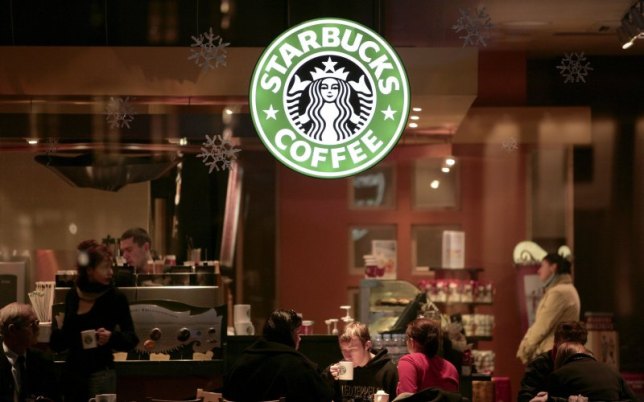Meet the man behind the “Ethiopian jazz” on this article from The Guardian.
‘Everybody knows that Ethiopian jazz is the only kind worth listening to these days,” a bored Roman socialite remarks during one of the many party scenes in Paolo Sorrentino’s film The Great Beauty. It sounds like an epitaph. How could something so special, so original, survive the embrace of people so devoted to superficiality, so quick to move on to the next sensation?
As a fashionable novelty, Ethiopian jazz may indeed have had its moment in the spotlight. As an evolving form, however, it demonstrates greater resilience. Its roots lie deep within the musical culture of a country that, with the exception of a brief period under Italian occupation between 1936 and 1941, has enjoyed 3,000 years of independence. The first to realise that its distinctive indigenous modes and textures could be blended with those of American jazz was Mulatu Astatke, the composer and bandleader whose early recordings began to attract a cult following 15 years ago, after being unearthed and reissued by an enthusiastic Frenchman.
Astatke, whose appearance in London on 13 September will be a highlight of the Southbank Centre’s Africa Utopia festival, was supposed to devote his life to aeronautical engineering. Instead, he invented a musical genre and became the central figure in an enormously successful series of anthologies that dug deep into the origins of a fascinating but long-hidden world.
The 16-year-old Astatke had arrived in Britain in 1959, sent from Addis Ababa to North Wales by his wealthy parents, first to Lindisfarne College and then to Bangor University. But music got in the way of those initial career plans, and his gifts took him to Trinity College of Music in London, where he studied piano, clarinet and harmony, and to the Eric Gilder School of Music in Twickenham, whose pupils included the Ghanaian saxophonist Teddy Osei – later to found Osibisa, the pioneering Afro-rock group – and Labi Siffre, the singer-guitarist. He began playing vibraphone and piano in the clubs of Soho with expatriate African and Caribbean jazz musicians, and in dance halls with the popular Edmundo Ros orchestra.
Leaving London in 1963, he enrolled as the first African student at the jazz-oriented Berklee College in Boston, whose alumni include the vibraphonist Gary Burton and the pianist Keith Jarrett. Moving to New York, he pursued his interests in jazz and Latin music.
When he returned home in 1969 it was with the idea of creating a more ambitious musical fusion. In Addis Ababa he discovered an upsurge of activity in the world of the arts and entertainment, and a booming night-life scene that offered plenty of scope for experiment. He called his new music “Ethio jazz”, and his recordings from the period show him using local musicians, steeped in the four basic pentatonic modes with which they grew up, to impart a new flavour to the structures he had brought with him from America.
“There’s an obvious influence from people like Duke Ellington,” says Alexander Hawkins, the 33-year-old English pianist who has been a member of Astatke’s band for the last five years and is featured on his most recent album, Sketches of Ethiopia. “Duke is one of Mulatu’s heroes. But it’s all filtered through this African rhythmic sensibility – sixes against fours and threes against twos in the music on a deep level – and also the other elements of the Ethiopian sound, in particular the modal language, which is probably the thing that most conspicuously sets it apart from other African traditions. The Ethiopian modes have an almost Arabic feel to them, this strange harmonic minor twist with a flat sixth and a sharp seventh, which gives the music a very unusual tonality.”

Mulatu Astatke on stage at the Big Chill festival, Herefordshire, in 2011. Photograph: Andy Sheppard/Redferns | Image Source: theguardian.com
Astatke worked as an arranger for other artists as well as a bandleader, but the musical elements he imported from America – his own vibraphone; the electric keyboards and the wah-wah pedal for the electric guitar; the use of congas and bongos to articulate Latin rhythms – were only gradually assimilated, sometimes meeting outright resistance from those who resented what they saw as the imposition of alien sounds and techniques on traditional material.
Nevertheless, his reputation grew, thanks in part to a partnership with Amha Eshete, an equally adventurous young man who had started the country’s first independent record label. In 1973, Astatke was chosen to perform with Ellington when the American bandleader toured Ethiopia and Zambia, sponsored by the state department at a time when the US government saw jazz as a weapon in the propaganda war against communism. The two men became friends and played together – Ellington suffering from lung cancer and with only a few months to live – at a concert in Haile Selassie’s presence.
The following year Selassie was deposed in a coup that led to 18 years of government by the Derg, a Soviet-backed military junta, a period of repression in which hundreds of thousands were murdered or deported, or died during famines. A strict curfew put an end to Addis’s nightlife and many musicians left the country, including several of Eshete’s most important artists. Eshete himself opted for exile when he learned, while visiting New York to buy recording equipment, that the singer Tekle Tesfazghi had been imprisoned after expressing support for Eritrean separatists in one of his lyrics.
Astatke, however, stayed put and earned a living teaching music. In the first year of the revolution he recorded Yekatit: Ethio Jazz, the first Ethiopian album to be planned as a single entity, rather than being compiled from a collection of singles. “Yekatit” is the Ge’ez word corresponding to February, the month in which the revolution took place, suggesting Astatke’s support for the regime. Taking advantage of a warm relationship between the Derg and the Castro government, he visited Havana, deepening his knowledge of Latin music at first hand.
In 1991, following the collapse of the Soviet Union, the Derg disintegrated and the Ethiopian People’s Revolutionary Democratic Front took power, establishing a parliamentary republic. Eshete returned, having already been contacted by Francis Falceto, a French record producer with plans to license the recordings made between 1968 and 1974 by Astatke and others. Knowing that his own enthusiasm for this music was matched by that of collectors who had been foraging for the original albums and singles, Falceto had become convinced that there would be a viable audience for a series of compilations.
A deal was made, the master tapes were retrieved and Falceto embarked on the process of audio restoration. The initial disc in the Ethiopiques series, released on the Buda Musique label in 1998, was intended to be the first of 10. In 2005, however, the inclusion by the director Jim Jarmusch of half a dozen pieces by Astatke in the soundtrack to his comedy-drama film Broken Flowers, starring Bill Murray, brought the music to a wider public, and the series is now up to 29 volumes.

Mulatu Astatke performing at the Barbican Centre in London in 2010. Photograph: Philip Ryalls/Redferns | image Source: theguardian.com
Like a lot of “world music” picked up by western audiences in recent years, Ethio-jazz appeals because it is simultaneously familiar and foreign. Western instruments – trumpets and saxophones, electric keyboards and bass guitars – are played with a different accent, generated by tuning (some Ethiopian music also makes use of non-tempered scales) and timing. Astatke’s early records often meander gently but seductively along the apparently endless path of a two-chord vamp, like a laid-back East African cousin of John Coltrane’s jazz or James Brown’s funk.
Astatke’s travels had made him thoroughly familiar with the music of both those giants of American music. But in the case of other Ethiopian musicians who did not receive western training, such as the extraordinary tenor saxophonist Getatchew Mekuria, the connection may be less explicit.
Initial exposure to Mekuria’s recordings (his classic 1970 album, Negus of African Sax, was reissued as Ethiopiques, Vol 14) invariably persuades western jazz fans they are listening to an improviser whose intense delivery and wild vibrato must have been influenced by such leaders of the 1960s free jazz movement as Coltrane and Albert Ayler. Yet Mekuria, who is now in his late 70s, denies the suggestion. His apprenticeship was served with Addis Ababa’s municipality and police bands, after which he made his name with instrumental versions of traditional warriors’ songs. In Hawkins’s view, the undoubted similarity of the music of Mekuria and other Ethiopians to the sound of American musicians is a matter of “family resemblance” rather than direct influence.
Lke Astatke, Mekuria has taken advantage of the recent and unexpected interest of foreign audiences. He toured and recorded with the Ex, a Dutch punk band, and with Boston’s adventurous Either/Orchestra. In 2008, he and Astatke performed together with other Ethiopian musicians at Glastonbury. In 2009 Astatke recorded and toured with the Heliocentrics, the British funk band.
The following year saw the release of an album called Mulatu Steps Ahead, on which Astatke used a combination of the Either/Orchestra and British-based musicians while adding Ethiopian instruments to the mix: a bamboo flute called the washint, a kind of lyre called the krar, and the single-string masinko, a relative of the West African n’goni. On Sketches of Ethiopia, recorded by his new band and released last year, those same instruments are integrated into a series of subtly hued arrangements showing the influence of Ellington and Gil Evans filtered through an Ethiopian sensibility.
“Mulatu has that thing the great composers have,” Hawkins says, “of coming up with something that can be both really quite odd and completely inevitable. When Thelonious Monk plays a note, for instance, it’s at once the sound of surprise and the only note it could ever have been. Mulatu’s bassline for ‘Yekatit’ is deeply weird for all kinds of technical reasons, but it sits perfectly. There’s a tune that I love called ‘Kasalèfkut Hulu’ where the horn line is so counterintuitive and yet feels good. With ‘Netsanet’, the bassline is in six and the drums are in four. If you said that to the people dancing to it, they’d fall over – but if you don’t, they’re fine.”
He describes the experience of playing with Astatke as a reminder of music’s functional and spiritual dimensions. “For someone like me, a middle-class white guy from Oxford, music has never been part of a struggle or a ritual. But this is a first-hand reminder that there are places where music isn’t just a beautiful thing that you let happen to you.”
Astatke is 70 now, but his work is not yet done. According to Hawkins, he makes regular visits to Harvard and MIT, where Unesco funding enables him to work on creating new versions of Ethiopian instruments, using modern materials and technology, expanding their range to encompass the western 12-tone scale. Purists might wince at the idea. But if anyone can make it work, it’s probably him.
Hello there! I’m Lou S. Habash, a private self-enrichment instructress with an emphasis on jazz dance. Visit my Facebook page to know more about my passion.

















